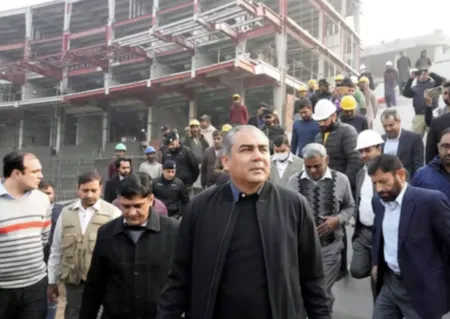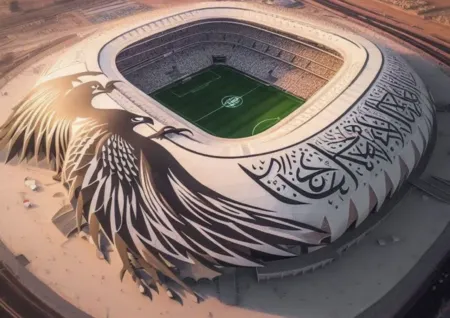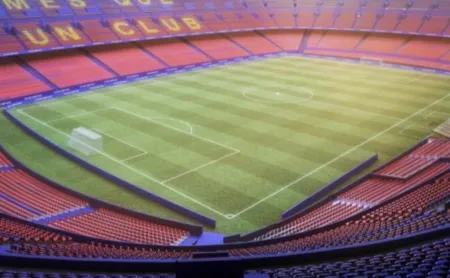Work continues at the proposed semi-final venue for the FIFA 2022 World Cup.
Progress at the site for the proposed host venue for matches up to the semi-finals of the 2022 FIFA World Cup in Qatar is now in full swing following successful work on the foundations and the installation of the first sections of the 39ft lower tier walls, which will carry the weight of the entire stadium structure. The stadium will feature a futuristic retractable roof with mechanics similar to those used at Wimbledon’s Centre Court. The retractable roof will be able to close completely in 20 minutes.
The Al Bayt Stadium Project director, Aspire Zone Foundation, Nasser Al Hajeri, pointed out that work on site is progressing on different sectors. “We are now seeing the growth of the main stadium structure on-site with the progress on the vertical construction,” Al Hajeri tells the Supreme Committee for Delivery and Legacy’s website.
“Other ongoing works in the stadium precinct include excavation, de-watering, installation of pipe connections, and the recent setting up of the nearby tree nursery. Overall, we can see that the stadium construction is advancing well and we will continue to see further progress over the coming weeks and months.”
As the stadium structure continues to rise, main structural work on one of the two player tunnels has already been completed and work is underway on the other one. A number of the stadium building columns have been put in place – with the highest point reached so far being 69ft – along with a section of the buttress wall which, once completed, will carry the next two levels of the structure reaching a total of 121ft.
Currently there are 21 cranes on-site – including one 280-ton mega crane, and 95% of the foundation work has been completed. The next step in the construction is placing the top slab and installing the other precast elements which will shape up the venue. With the stadium expected to be finalized in 2018, samples of the seats that will fill the stadium have already arrived on-site.
“A Qatari company has been appointed to design, manufacture, deliver and install the stadium seats, which will have patterns similar to those in a traditional tent which the design is based on,” said Supreme Committee for Delivery and Legacy (SC) project manager for Khalifa International Stadium and Al Bayt Stadium, Mohemed Ahmed.
He added, “The design, manufacturing and installation of the seats is set to commence next year on all three tiers. Two of them are made of conventional and precast structure and one of them is made of structural steel, which will be modular seating that will be removed after the tournament.”
The stadium design is an entirely Qatari concept, reflecting the country’s history and culture through the nomadic tents used in the region. The venue has a modular design, which includes an upper tier of removable seats. After the tournament, this upper tier will be removed and the capacity of the stadium will be reduced to 32,000 seats.
The stadium will have cooling technology thanks to a number of cooling devices distributed throughout the venue that will receive cold water from the chillers in the nearby energy center.
A joint venture involving Galfar Al Misnad, Salini Impregilo Group and Cimolai is in charge of the main construction of the stadium and the energy center. Local contractors Bin Omran Trading & Contracting and Al Sulaiteen Agricultural & Industrial Complex are working on the precinct infrastructure and landscape, respectively.
Images courtesy of Supreme Committee for Delivery and Legacy
November 10, 2016




